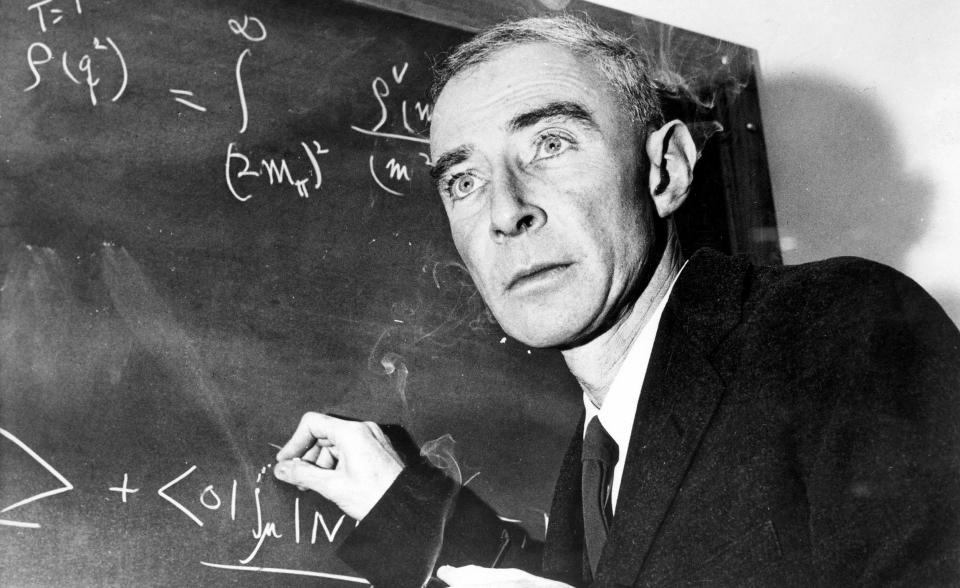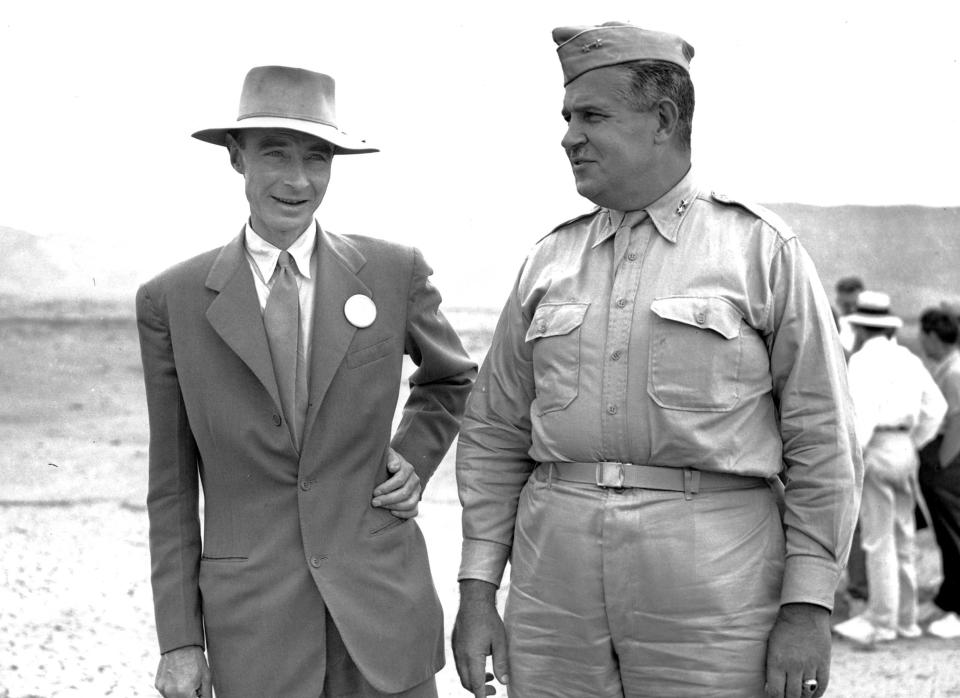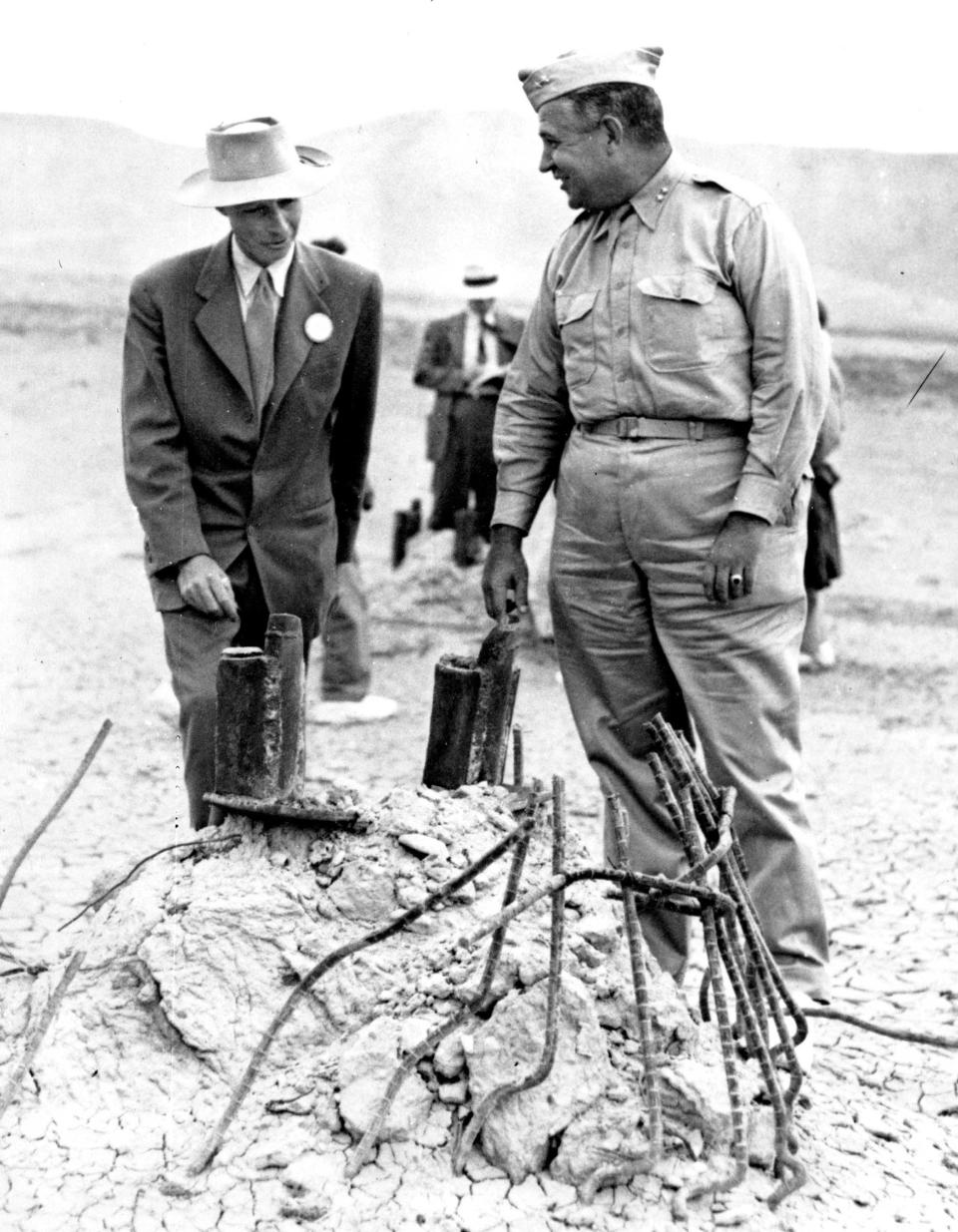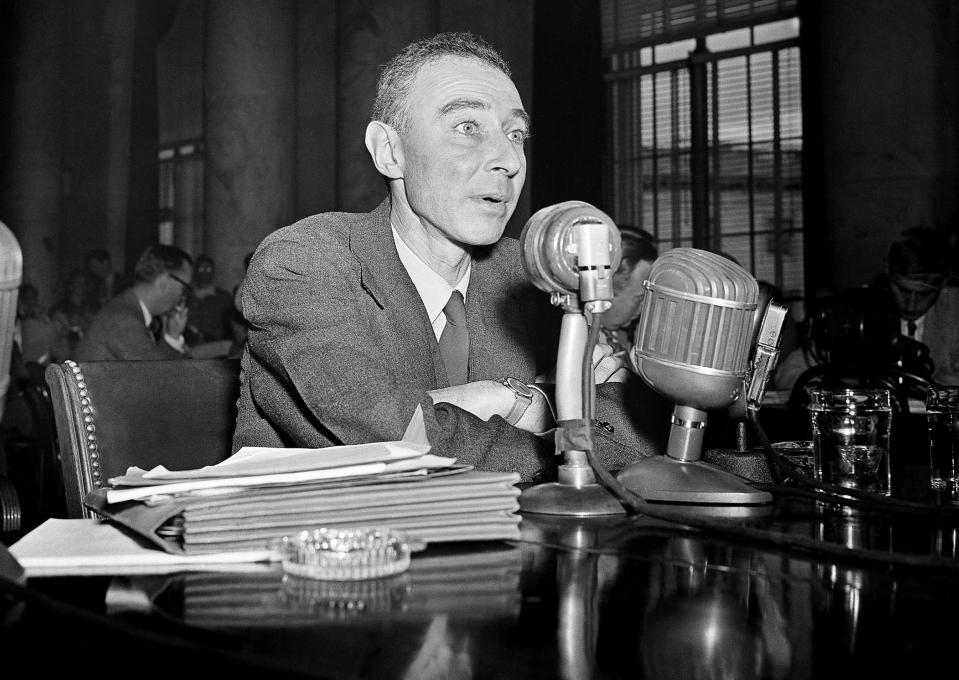What happened to J. Robert Oppenheimer after the events of 'Oppenheimer'?
- Oops!Something went wrong.Please try again later.
- Oops!Something went wrong.Please try again later.
J. Robert Oppenheimer is the man at the center of one of the summer's most anticipated films — Christopher Nolan's newest release, "Oppenheimer."
The film centers around Oppenheimer's life as a physicist and his role in developing the the world's first nuclear weapon at a secret laboratory in the desert of New Mexico, where he became known as the father of the atomic bomb.
After the war ends, the film then pivots to the ramifications of closed-door investigation that occurred in the 1950s due to questions over his communist ties on Oppenheimer's life.
Here's what happened to Oppenheimer after the war, how the results of the security investigation impacted his life and the 2022 twist in Oppenheimer's story the movie leaves out.

Who was J. Robert Oppenheimer?
Oppenheimer was born Julius Robert Oppenheimer on April 4, 1904 in New York City, according to the Atomic Archive. He studied at Harvard University and University of Göttingen, where he completed his PhD in 1927.
In 1929, he received offers to teach at the California Institute of Technology and the University of California at Berkeley, according to the Institute for Advanced Study. He accepted both and divided his time between Pasadena and Berkeley teaching physics students.
In 1936, he met Jean Tatlock, then a student at Stanford University Medical School, according to the Atomic Heritage Museum. The pair had an intense relationship for several years, and Tatlock, played by Florence Pugh, introduced him to several members of the Bay Area Communist Party, of which she was a paying member.
Oppenheimer said he proposed to Tatlock twice, according to the Atomic Heritage Museum, but eventually married Katherine (Kitty) Peuning Harrison, a biologist and twice divorcee, in 1940. Kitty, portrayed by Emily Blunt in the film, had their first child in 1941.
Oppenheimer during World War II
When World War II began, Oppenheimer got involved in efforts to develop an atomic bomb in Lawrence’s Radiation Laboratory at Berkeley, according to Atomic Archive.
In 1942, General Leslie Groves, portrayed by Matt Damon in the film, appointed Oppenheimer as director of the Manhattan Project, code name for the governmental project to develop an atomic bomb.

Oppenheimer oversaw the construction of a secret laboratory in Los Alamos, New Mexico, where he recruited several scientists to move to the lab so they could work on the bomb until it was completed, according to Atomic Archive. The scientists, including Oppenheimer's younger brother Frank, worked at the lab for several years — even Oppenheimer's second child was born at Los Alamos in 1944.
The joint work at Los Alamos resulted in the first nuclear explosion, a test of the atomic bomb which Oppenheimer called Trinity, on July 16, 1945 in Alamogordo, New Mexico. The U.S. dropped the first nuclear weapon used on a military target three weeks later in Hiroshima, Japan, on August 6, 1945.

What did Oppenheimer do after the war?
After the war, Oppenheimer was appointed to chairman of the General Advisory Committee of the Atomic Energy Commission (AEC), which replaced the Manhattan Project, according to the Institute for Advanced Study. He also served as the director of the Institute for Advanced Study, located in Princeton, New Jersey, from 1947 to 1966.
The AEC oversaw all atomic research and development in the U.S., and as chairman from 1947 to 1952, Oppenheimer opposed the development of the hydrogen bomb, a bomb a thousand times more powerful than the atomic bomb.

During the Cold War, Oppenheimer's stance was controversial, and in 1954, he was subjected to a closed-door security investigation accusing him of having communist sympathies, according to the Institute for Advanced Study.
His security clearance was revoked as a result of the investigation and he lost his position at the AEC, effectively bringing his career to an end.
Physicist Hans Bethe, who worked with Oppenheimer at Los Alamos, said the result of the investigation forever changed Oppenheimer.
“Oppenheimer took the outcome of the security hearing very quietly but he was a changed person; much of his previous spirit and liveliness had left him,” Bethe said, according to the Institute for Advanced Study.
How did Oppenheimer die?
Oppenheimer, a chain smoker, was diagnosed with throat cancer in 1965, according to "American Prometheus: The Triumph and Tragedy of J. Robert Oppenheimer" by Kai Bird and Martin J. Sherwin, a book that inspired Nolan's "Oppenheimer."
He underwent chemotherapy in 1966, but fell into a coma on February 15, 1967, and died at his home in Princeton, New Jersey three days later on February 18, 1967, according to "American Prometheus." He was 62.
In 2022, 55 years after Oppenheimer's death, the Department of Energy nullified the 1954 decision to revoke Oppenheimer's security clearance.
Secretary of Energy Jennifer M. Granholm said in a statement the department's decision came after it was "entrusted with the responsibility to correct the historical record and honor Dr. Oppenheimer’s profound contributions to our national defense and the scientific enterprise at large."
"As time has passed, more evidence has come to light of the bias and unfairness of the process that Dr. Oppenheimer was subjected to while the evidence of his loyalty and love of country have only been further affirmed," Granholm said.
CLARIFICATION (July 21, 2023, 5:55 p.m.): An earlier version of this article referred to one of Oppenheimer's roles as "director of Princeton’s Institute for Advanced Study." The Institute for Advanced Study is located in Princeton, New Jersey, but is not part of Princeton University.
This article was originally published on TODAY.com

